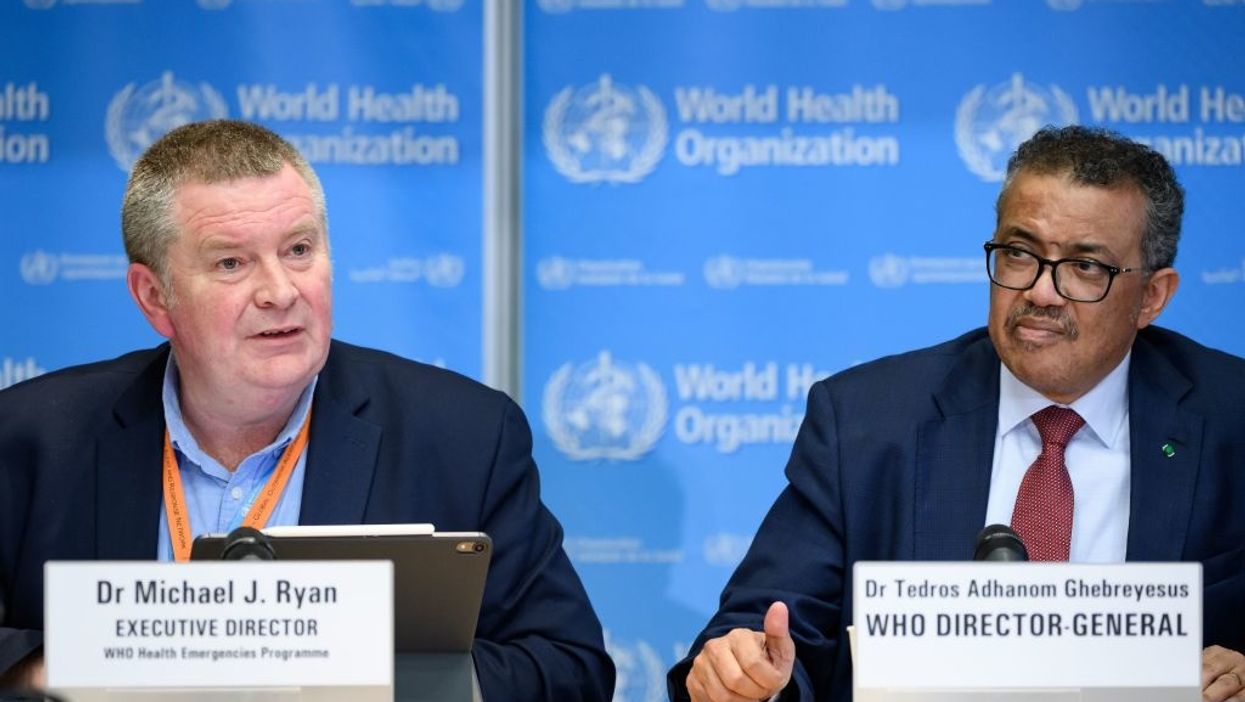It was the single most impactful fact disseminated by the World Health Organization in influencing the unprecedented global panic over this virus. They claimed in early March that the infection fatality rate (IFR) for COVID-19
was 3.4%. Those of us who paid attention always knew that it was bogus, but how ironic that a top WHO official has now given us the denominator we were looking for, which proves that the fatality rate of this virus is right in line with seasonal flus, although more people will be infected.
Late last week, Dr. Mike Ryan, the executive director of the WHO's health emergencies programme,
said that "our best guess" is that 10 percent of the world has been infected with the virus. That is roughly 750 million people. While he meant to sow panic and push for more restrictions, he inadvertently let the cat out of the bag and gave us the infection fatality rate.
According to the WHO,
roughly 1 million people have died from the virus. Let's put aside the fact that so many of those people died with the virus, not because of it and that a majority would have died within the year. Working with their official count, it would mean the implied infection fatality rate for the world, according to the WHO, is 0.13%.
Guess what else has a similar fatality rate? If you guessed the plain old flu, you won the jackpot. Here are the estimated fatality rates in the U.S. of the past decade worth of flu seasons
based on CDC data.

Notice how the death rate for COVID-19 is in line with that of the seasonal flu. The 2017/2018 flu season was even considered a pandemic, and according to
CDC's projected estimates, the death toll was "more than 80,000." That would result in an IFR of at least 0.18%. Yet, nobody in this country outside of those in health care circles even remembers it.
It's also important to keep in mind that the past two flu seasons were very mild, so COVID-19 likely killed out more people who were slated to die from respiratory viruses over the three-year window. Preliminary estimates of the 2019-20 flu season
project just 22,000 deaths. Additionally, according to CDC, the flu essentially disappeared from the Southern Hemisphere this summer and there is solid evidence that the two respiratory viruses don't mix in the Northern Hemisphere either. Thus, you have to subtract the amount of typical flu deaths that we are missing and only focus on the net result, which further lowers the excess death burden of this virus. The number of flu deaths will likely remain low for the next year or two as a result of COVID-19.
Imagine what the fatality rate would have been had the World Health Organization not
followed China's advice to liberally place people on ventilators during the early months of the epidemic?
Also, as time goes on, more and more people are getting the virus, yet fewer people are dying than before. For example, despite an explosion of cases in Europe, there are very few deaths. One doctor calculated the case fatality rate (CFR) in some European countries at 0.76%.
Typically, the infection fatality rate (IFR), which factors in all the
undetected cases, is as much as 10 times lower than the fatality rate of known cases, which disproportionately include the more clinically acute cases.
Nowhere is this dynamic more evident than among college students. Unlike younger children
who have shown very little capacity to spread the virus, college kids are spreading the virus like wildfire in dorms. Yet, according to Dr. Andrew Bostom of Brown University, who tabulated the data from 50 university systems, there were just three hospitalizations out of nearly 70,000 cases. There have been no reported COVID-19 deaths on campus.
The overreaction to the fatality rate and overstating of our ability to even mitigate it has real life consequences. Consider the fact that in Third World countries, the death rate from the virus has
been particularly low, yet the disrupting responses to it led by Western elites have killed more people particularly in those countries. According to a report published last Thursday by Oxfam International, a massive global famine relief charity, 121 million more people could be "pushed to the brink of starvation this year," with as many as 12,000 dying a day from hunger due to the shutdowns and restrictions on commerce and production across the world. This is on top of more people dying from missed vaccinations, malaria, and medical treatment.
Thus, while western leaders can virtue signal about the need to stay home – all the while enjoying their fat paychecks and Amazon deliveries working from home – those in Africa and other underdeveloped areas will pay with their lives. This is all for a virus that has roughly the same fatality rate as the flu, albeit most people experience milder symptoms, often like those of spring allergies. To be fair, more people will get this virus than during a typical flu season, which will add to the death count, but there has been
no proven method of stopping the spread.
What is so sad is that our leaders understood this reality before the media turned the virus into a political issue and decades of science and human experience were extirpated in favor of the virtue signaling opportunity of a lifetime. On March 26, Dr. Anthony Fauci, along with National Institutes of Health deputy director of clinical research Clifford Lane and CDC Director Robert Redfield,
published an article in the New England Journal of Medicine making exactly this point. They predicted that once the true number of asymptomatic and subclinical cases would be factored in, "the overall clinical consequences of Covid-19 may ultimately be more akin to those of a severe seasonal influenza (which has a case fatality rate of approximately 0.1%) or a pandemic influenza (similar to those in 1957 and 1968) rather than a disease similar to SARS or MERS, which have had case fatality rates of 9 to 10% and 36%, respectively."
Sadly, they didn't factor in the virtue signaling they'd eventually endorse, and the countless lives lost to suicide, drug addiction, famine, and missed medical care thanks to their subsequent decision to exchange science for power and control.




